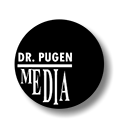SAFETY BIO-IDENTICAL VS. SYNTHETIC
Human vs. Synthetic Hormones
How are Human Estrogen, Progesterone, and Testosterone available?
Progesterone, estrogen, and testosterone are three hormones whose names are known by most adults, but what are they? What do they do? And what can they do for you?
Read on to find out how replacing these hormones can have a positive effect on your life!
Progesterone, a naturally occurring hormone in both men and women participates in practically every physiological process in the human body. Its tremendous increase during pregnancy acts to stabilize both mother and child. At levels reached just before delivery, progesterone produces anesthesia and contributes to tissue elasticity. Progesterone's stabilizing influence is evident in muscle tissue, such as the uterus, blood vessel walls, the heart, intestines, and bladder.
Progesterone can positively impact susceptibility to many conditions including herpes infections, dizziness, varicose veins, mastitis, fibroma and endometriosis.
Progesterone also helps control the entire range of PMS symptoms including migraine, acne, hot flashes, edema, and lethargy. Links between progesterone insufficiency and certain cancers have also been made. For instance, prolonged progesterone deficiency causes subtle changes in a normal uterus so that endometrial hyperplasia (an abnormal thickening of the uterine lining) may develop. This, in turn, may eventually lead to uterine cancer if left untreated.
Finally, many studies have concluded that progesterone has a positive impact on osteoporosis in post-menopausal women.
Estrogen is actually a group of three steroid hormones - Estradiol, Estrone, and Estriol - with very similar properties.
Estrogen is responsible for the changes that occur when a girl becomes a woman and also shares responsibility for PMS (as mentioned above.)
When low estrogen levels occur several results are possible; an increased risk of heart disease, osteoporosis, increased memory loss, classic menopausal symptoms (hot flashes, increased vaginal dryness), urinary incontinence, bladder infections and reduced libido to name few.
These conditions are treatable, but there's a problem; an indisputable body of evidence exists directly linking estrogen replacement therapy to various cancers (especially uterine cancer). Numerous studies have shown that women taking estrogen are 4 to 13 times more likely to develop uterine cancer than those not taking this hormone. It should be noted that the vast majority of women studied were either using estrogen without balancing it with progesterone, or they were using the wrong kind of estrogen, synthetic, non-bio-identical. It's important to note that some forms of estrogen are safer than others. It is also important to note that recent studies have found discrepancies in the woman’s health initiative study, in the type of patient and the type of analysis done to report findings and the above recommendations are changing.
Testosterone is believed by most to be a "male hormone" that changes a boy into a man. While this is true, it's important to understand that women need testosterone also. With testosterone, male sexual characteristics develop during puberty. These include growth of the male reproductive organs, thickening of the vocal chords (which deepens the voice) and growth of body hair, an increase in muscle mass/strength, a decrease in body fat and an increase in libido. In women, testosterone is needed for many of the same reasons as in men, but in significantly smaller amounts (about 8% of that required by males.) In women, testosterone also contributes to energy levels, an overall sense of well-being and libido. Research during the past few years has shown the effects of testosterone go further than just masculinization.
Several studies have shown a relationship between low testosterone levels, elevated triglycerides ("fat") and LDL cholesterol (the "bad" cholesterol that is a major factor in atherosclerosis). Conversely, studies have also shown a positive relationship between high testosterone levels and HDL cholesterol (the "good" cholesterol).
In short, researchers have concluded that there is a direct correlation between low testosterone levels and…
- The degree of Coronary Artery Disease;
- Other risk factors associated with heart attacks; and
- The possibility for coronary atherosclerosis itself.
Human vs. Synthetic Hormones: There Is A Difference!
Synthetic forms of progesterone and estrogen were developed because "natural" forms cannot be patented.
So what's the difference? A look at progesterone and its synthetic analogs - called progestin - should illuminate the answer.
Progestin is chemically similar to progesterone, but different enough to have some dramatic side effects. Just look in a copy of the Physician's Desk Reference (the PDR) and seek out medroxyprogesterone acetate (MPA). The long list of possible adverse reactions is staggering.
Natural, micronized progesterone has fewer adverse reactions than MPA. The only major problem attributed to the natural form (drowsiness) is dose related. This is easily corrected by adjusting the dose downward until anesthesia ceases and positive results remain. Non-Human Estrogen is not much better. In the U.S.A., conjugated estrogen is the most commonly used oral estrogen. It's obtained from the urine of pregnant mares and undergoes a conversion in the intestinal tract to estrone (the type of estrogen most implicated with increased risk for breast cancer in studies). The synthetic analogs of conjugated estrogen are also converted to estrone.
But what about estriol, which is not converted into estrone and is produced in very large quantities during pregnancy? Estriol has been shown to actually inhibit breast cancer in mice! It has all the benefits of the stronger estrogens, but with fewer risks. It's only negative is that it's much weaker than other estrogens; hence more is required to achieve the same results. For example, if you take a dosage of 0.6 to 1.25mg of conjugated estrogen, you would need 2 to 5mg of estriol for the same effect. But remember, with the increased amount of estriol you use, the less likely you are to get breast cancer (which is exactly the opposite of the dose relationships for synthetic and conjugated estrogens). Many physicians use an estrogen combination called "Bi-Est" which combines the advantages of estriol with the potency of estradiol in a ratio of 80%-20%.
How are "Human" Progesterone, Estrogen, and Testosterone Available?
Though not obtainable from most retail pharmacies, these hormone formulations ("Human" Progesterone, Estrogen, and Testosterone) can be made for you by a Compounding Pharmacy, which uses pure micronized progesterone, estrogen, and testosterone then compounds these hormones into a variety of dosage forms according to your doctor's prescription. You can receive these hormones in capsules to be taken by mouth or as transdermal creams. The transdermal cream prevents the breakdown of any hormone by the stomach and also delays the "first pass" effect of the liver. This "first pass" effect renders the hormone much weaker and, sometimes, produces harmful by-products.
Progesterone deficiencies are easily treatable. A progesterone deficiency may manifest itself in younger women as "problem periods. During these times, women may have trouble conceiving or have excessive menstruations. Progesterone therapy can be very effective in controlling problem periods.
Performing repeated D&C's will only stop the bleeding temporarily, whereas progesterone therapy can have long-lasting results. In some cases, after a few months of treatment, the body will bring its own progesterone production into the proper balance.
Premenstrual Syndrome (PMS) and menopause are classic examples of conditions treatable with progesterone. Usually, when a woman reaches her 40's, progesterone levels drop below normal. Also, quite commonly, there's a low progesterone/estrogen ratio. Both conditions have symptoms including anxiety, cramps, irritability, depression, headache, dizziness and bloating. Progesterone relieves these symptoms, enhances energy and sexual libido, and heightens feelings of well-being. A Transdermal Progesterone Cream is the easiest formulation to use for alleviating symptoms of PMS and menopause. You can measure your levels of progesterone via saliva or blood tests and this can be done with your initial consultation
Osteoporosis is a problem associated with menopause. Simply defined, osteoporosis is a loss of bone mass. In the U.S.A. alone it is the most common metabolic bone disorder, being responsible for more than 1.3 million fractures per year. In treating osteoporosis it's important to note that estrogen supplements delay bone mass loss, but do not reverse it. Progesterone on the other hand, effectively treats this loss of bone mass. This is because it actually enhances bone strength due to its anabolic nature and causes bone calcification. Hence, a reversal in diminished bone density is possible in many cases. Progesterone therapy is even used by men who, because of prostate cancer, cannot use testosterone supplementation.
Estrogen deficiencies are also easily treatable. One complication of a woman's diminished estrogen levels is the increased risk of heart disease. The frequency of heart disease in women, which is low before age 50 rises dramatically after menopause and approaches that of men.
A theory long held has a woman's natural sex hormones protecting her heart earlier in life (i.e. before menopause); during the last few years this theory has been proven. Results of a three-year study regarding the effects of hormone replacement therapy on heart disease were reported in 1995. The most illuminating result was that the greatest increase in HDL cholesterol (the "good" cholesterol) was found in women taking estrogen alone, which equals a 25% reduction in the risk of heart disease. Estrogen combined with progesterone reduces heart disease risk, but not as dramatically as estrogen alone. The study revealed a third of the women taking only estrogen developed endometrial changes (which is a precursor to uterine cancer). As an easy-to-apply Transdermal Cream, this combination is used daily to reduce the risk of heart disease without increasing the risk of breast cancer. We can decide what proportions of each hormone are needed for your cream by having your hormone levels tested. A true ant-aging doctor will know which tests to be done and more importantly how to interpret the results correctly.

Dr. Pugen's Anti-Aging Clinic
Clinical and Aesthetic Medicine
G1-3215 Hwy 7 East, Markham, ON L3R 3P3
OFFICE: (905) 475-9433
FACSIMILE: (905) 470-6214
Copyright ©2016 Dr. Gregory Pugen
Website by AVH Consulting and Management




This website is for informational purposes only and is not a substitute for medical advice, diagnosis or treatment.

